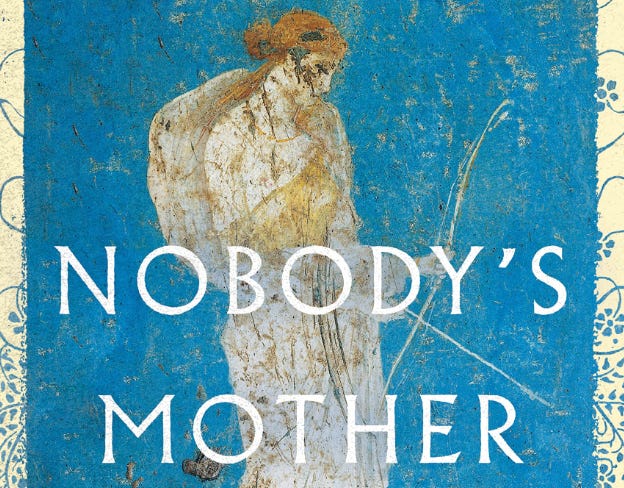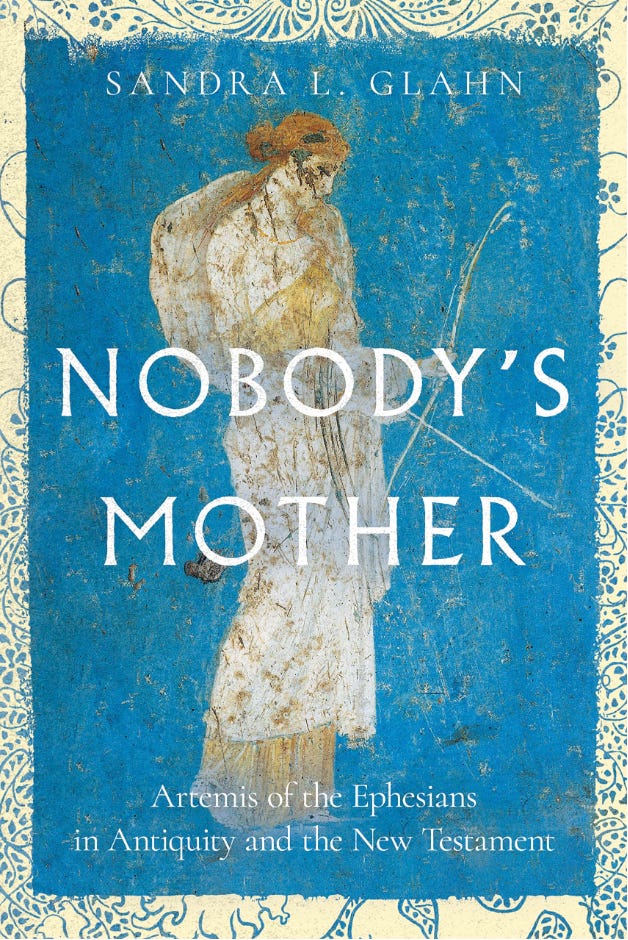I like Sandra Glahn’s book, Nobody’s Mother. The subtitle is a dead giveaway: Artemis of the Ephesians in Antiquity and the New Testament. She patiently examines the Artemis cult of Ephesus and the ancient world in order to explain the difficult passage in first Timothy chapter 2 verse 15. What does “saved through childbearing" mean? Or, more explicitly, what did it mean in Ephesus where the typical woman convert to faith in Jesus would have come from the Artemis religion? To whom would she pray for protection?
Again I will simply summarize what Glahn concludes.
First, the woman is told to be quiet – not absolute silence but more of a life of discipleship -- because “Adam was formed first” and because “Eve was deceived.” Some contend that this reflects Paul's theology of the creation order and it amounts to a kind of hierarchy in the pre-fall reality. Others, and this is truly the traditional view, believed that women should remain silent because they had a greater capacity to be deceived. Some believe this today. Names omitted.
Second, Glahn argues, on the basis of her sketch of the Artemis cult, that “in the Ephesian origin story, Artemis is first; it's one of her titles. In her own creation story, with its female-male pairing, she is firstborn.” So, in context, the evidence suggests that it was a goddess-first context and it emphasized “preeminence and autonomy.” Which means the apostle Paul counters to “restore interdependence.” That is, in the book of Genesis Adam was created first in a “male-female pairing.” Adam was not the one deceived. Paul “corrects a false story with a true one period he is using a narrative to counter a competing narrative.”
Paul does not argue or believe that women are more easily deceived. He knows all humans can be deceived. “Male-female differences in levels of deception are not due to ontology or biology but rather to differences in age, education, experience, and opportunity. If women as a class were more easily deceived than men, Paul would not have women instructing children, the most vulnerable of all humans.” This by itself demolishes the truly traditional view.
Third, the consolation that Paul offers is that a woman will be saved through childbearing. This verse was the quest of this book’s research. Remember that the book of Genesis teaches that Eve’s consequence of the sin in the Garden of Eden was pain in childbearing, while one of the promises of the Artemis cult was that the goddess could deliver children without pain, or “euthanize women in childbirth.”
Fourth, one of the biggest issues is the meaning of the word save in “will be saved in childbearing.” Glahn’s conclusion, after sorting through the evidence of the New Testament which frequently emphasizes salvation as a spiritual salvation as well as a physical salvation, is that this salvation is preservation through childbirth. A deciding element for Glahn is that having children would never have been considered by Paul to be a means of salvation in an eternal sense.
Fifth, Glahn concludes after a patient and very interesting study that Paul is quoting a local saying when he says “she will be saved through childbearing.” She concludes that “she” quickly followed by “they” could be indicative that the she-statement is a quotation of a local saying. Thus, “But she will be saved through childbearing IF they continue in faith and love and sanctity with self-restraint.” And Glahn attaches “This saying is trustworthy” to 1 Timothy 2:15 not to 3:1.
Sixth, Glahn imagines a very helpful story about Theodora who was a “Romanized Ionian polytheist” whose world combined what we call religion with ordinary life. For her Artemis was a goddess who had protected her in the birth of her first two children. But then Theodora converts to faith in Jesus Christ and is put into a dilemma. She is pregnant again. That is, now she wonders about protection in giving birth and will have been tempted to plead with Artemis. The question she faces is the question about which God will she trust. In her faith she had moved from a female-dominated cult to a more male-dominated one.” Her idea of deliverance in childbirth would have been challenged. Thus, “Believing Ephesian women did not need the goddess of midwifery.” She would need to learn to trust in God in the face of Jesus Christ. (By the way, Emily Gathergood’s PhD is about the God of Israel as midwife in the ancient world. In my forthcoming commentary on the Pastoral Epistles I cite the evidence Gathergood examined with finesse.)
Thus, Glahn concludes that this most vexing of passages with its most vexing of verses addresses a local problem in Ephesus shaped by the Artemis cult. Redemption in Jesus will include a new God to whom one prays for safety and protection in giving birth. If Artemis could protect, how much more Jesus!
What a wonderful book to read.






Thank you for your insights.
As Christians I think it is profoundly important that we develop some kind of rubric that distinguishes classics work and historical theory from what is exegetically responsible. As Evangelicals it is necessary, since we do not hold tradition to on equal tier of authority as scripture, that our hermeneutical tools will develop and even change our doctrines.
I am personally very interested in Sandra's work. We need better answers to 1T 2. I'm thankful for so many female scholars who are showing up to answer that call.
Historically this argument is clearly relevant. It also has real issues to be worked out. Classics scholars have shown that the matriarchal components of Artemis worship aren't as grand or nourishing as they may seem on the surface. Priestesses were also trans men and her many breasts may not have been for feeding the world but were in fact magical purses meant to help hedge your bets.
The historical questions are exciting and I'm on the edge of my seat. Exegetically however, I'm concerned we shouldn't jump the gun on applying them to texts without evidence of causation not just correlation. I'm willing to admit there could well be evidence of causation in 1 T.
One of the halmarks of Evangelicalism, shown as far back as Harnack and as recent as Bebbington, is its rejection of tradition. There is an old maxim, any text without a context is just a pretext for a subtext(prooftext). I'm heartened to witness many Evangelicals taking this seriously in recent scholarship. History is important and the church's history is seriously important. I'm glad to say, I think we are becoming less Evangelical in that regards. One worry I have is that some seem to be grabbing onto the context of history and wielding it a bit fast and lose. Admittedly, something we all have to be aware of.
Context is not something to control but is a guide to be followed. History criticizes us, the other way around is anachronism. I believe, we need high standards for how and when we apply context to scripture in order to interpret and apply it.
Dr. Glahn is clearly doing a great job on the road to discovery in that process. My worry is less with honest academics in this regard and more with the pastors. I believe that many who are reading works like Dr. Glahn's are honestly trying to serve their community faithfully. I'm increasingly worried that some may be getting a little too excited, too early in the process.
In a similar debate, the subjectivity of Systematics beat out the deposit of Dogmatics in the 20th C. Maybe the 21st. C. will see history finally put the last nail in the coffin of tradition as the primary rule of faith. Ironically, I'm increasingly convinced that is the lesser of the historically honest positions.